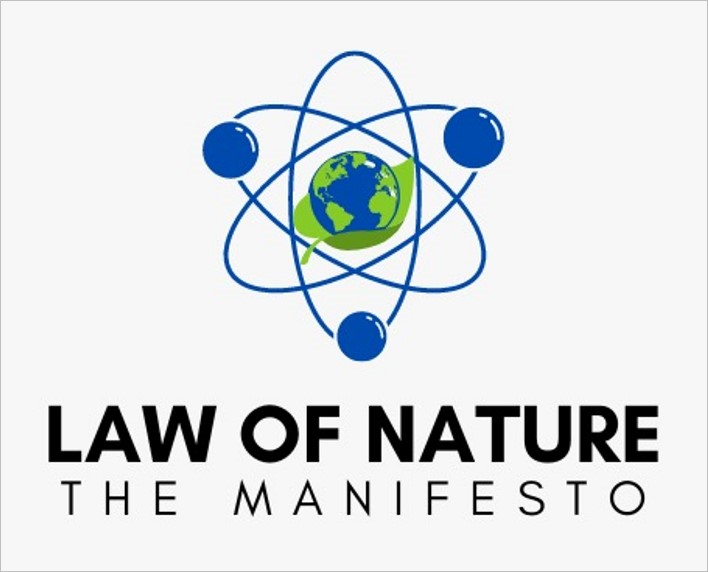






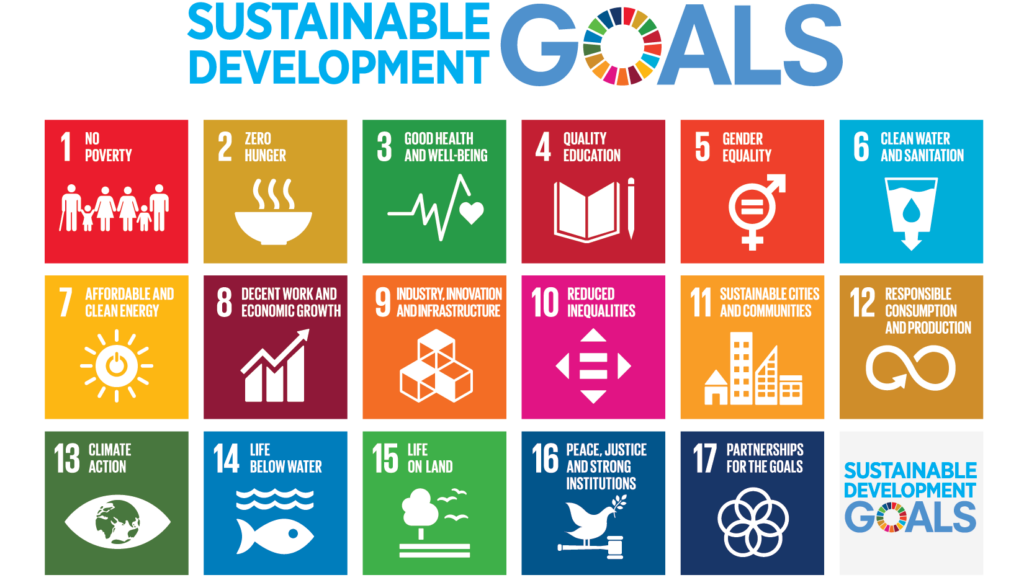
Initiatives waste their time and resources on overcoming mountains of obstacles
Available solutions of the high(est) impact get stuck in the system by default
Our long-standing approaches to solving the growing problems we face failed us
An enormous solution potential is waiting to be unleashed
Bureaucracy and fixed ways of thinking prevent us from unlocking it
Discoveries

When organizations and systems are managed using methods and frameworks designed for a world gone by, they tend to cross Tipping Points
Continued use beyond these Tipping Points causes them to collapse under the growing bureaucracy and complexity they themselves create
Beyond those Tipping Points, Nature-aligned approaches—adaptive, relational, and intuitive—
can restore flow, trust, system balance, and effectiveness

Restoring the health of systems
—whether in institutions, organizations, systems or everyday life—
by applying principles and laws drawn from Nature
After 2+ Decades of Failed Solution Attempts
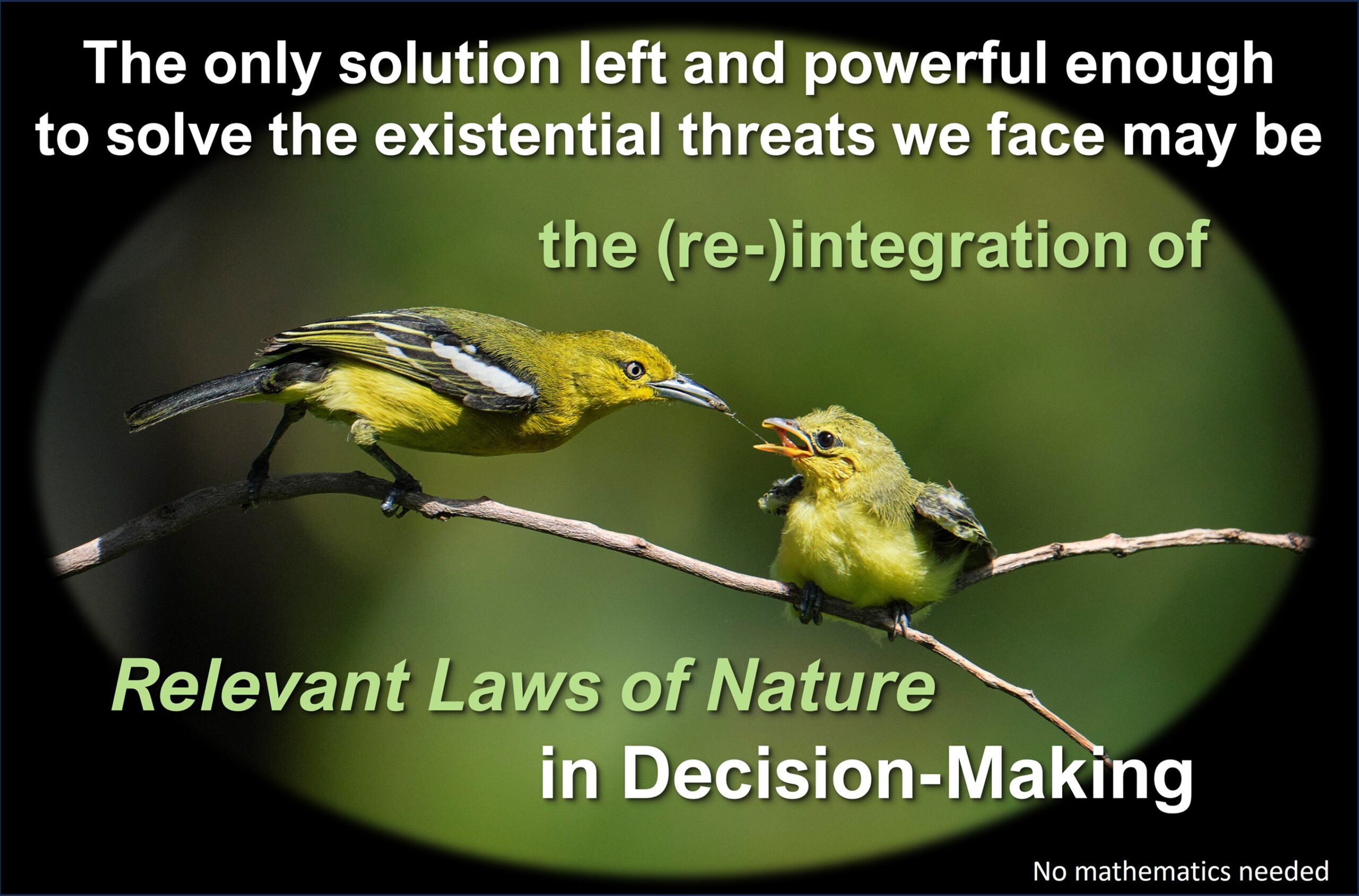
Examples: Gravity, Tipping Points, Capacity Bottlenecks
Emile van Essen, Founding Chair of World Sustainability Fund:
As far as I know, this is the only initiative worldwide responding to the following at the level required:
Patterns Standing Out

We Are All Part of Nature
Across fields, industries, and challenges, we now observe these common patterns:
Available
Impactful Solutions from Nature
That delivered the needed results where our long-standing solution approaches failed us
Laws of Nature | Listening and acting beyond the surface
Powerful Guidance from Nature
To transfer the decision-making of a world gone by into
the problem-solving decision-making required in today’s world
At work and home | Throughout hierarchies | Within initiatives
Universally Applicable Solution Elements
That resolve gaps and conflicts in today’s approaches
Transform standalone approaches and initiatives into a shared path
… where they complement each other and spark far-reaching effects
And more
And more
And more
Solvable Gaps and Conflicts in Today’s Thinking

The following gaps and associated conflicts prevent us from
recognizing and unleashing the vast potential of available solutions
Gap 1:
What needs to be done DIFFERENTLY to unleash the enormous solution potential available today?
Gap 2:
We have not found people or entities working on or willing to address the gaps in this box to the required levels for executability and scalability in TODAY’s WORLD:
What do decision-makers and their advisors REALLY NEED to make the problem-solving decisions?
What do initiative owners, innovators, experts, and project managers REALLY NEED to make their solutions executable, scalable, and durable at the SYSTEM LEVEL?
What delivered the needed results where our long-standing solutions failed us?
What delivered the HIGHEST IMPACT at the LOWEST COSTS and RISKS at the SYSTEM LEVEL?
Gap 3:
To solve complex problems, multiple groups need to work together. But expressions that get people on board for one group trigger people in other groups to conclude ‘this won’t work.’
Gap 4:
High-level demands and calls from movements, initiatives, and institutions
versus
Decision-makers, their advisors and experts missing the education, experience and knowledge to resolve gaps identified here
Gap 5:
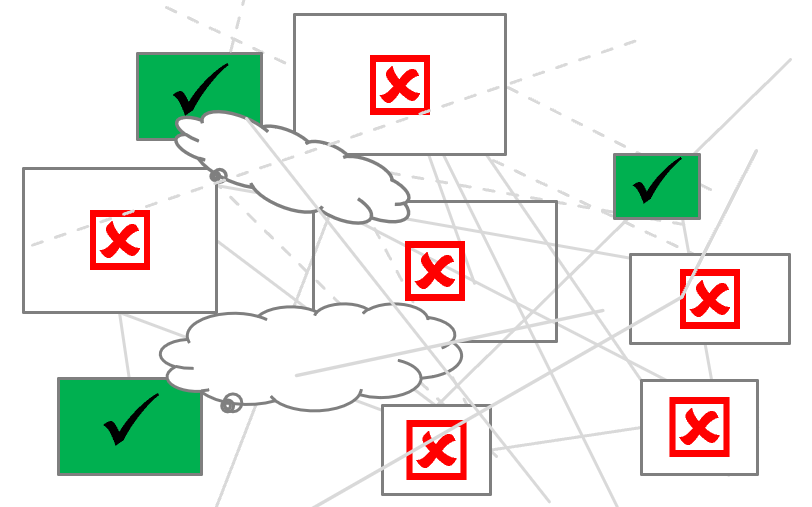
Today’s typical approach to complex problems like those at the top of this page is to break them into parts
But this means only a few parts get attention—while powerful solutions that lie outside those parts are missed.

The Polymathic Approach does the opposite
When we couldn’t find anyone addressing the gaps to the levels required, we took it on and asked:

The Polymath Approach led to:
How the above gaps and conflicts can be resolved with the least effort, costs, and risks
1. Open the door for the problem-solving decision-making required in today’s world
2. Transform standalone approaches and initiatives into
a Nature-based path complementing each other
3. Provide decision-makers and their advisors the guidance they need
to make the problem-solving decisions
4. Get the flywheel effect going in TODAY’s WORLD
5. Unleash the power of available and innovative solutions
— including non-technical innovations
What you can do right away
Without knowing the Manifesto—or being an expert—there are powerful steps you can take immediately.
Just go to the next section.
Only 8 + 7 common intervention possibilities
of the highest impact
Universally applicable
From the Manifesto and its two extensions
The Manifesto’s Guidance Package
Short video tutorials — from beginner to advanced levels
11 Law of Nature
Simple Language, no mathematics required

Curious how our initiatives can help each other—with little effort—open up bureaucratic processes and rigid ways of thinking?
Let’s TOGETHER Ignite the Problem-Solving Decision-Making
No Manifesto knowledge or expert background required
When decisions for complex subjects,
challenges or problems are to be made
1.
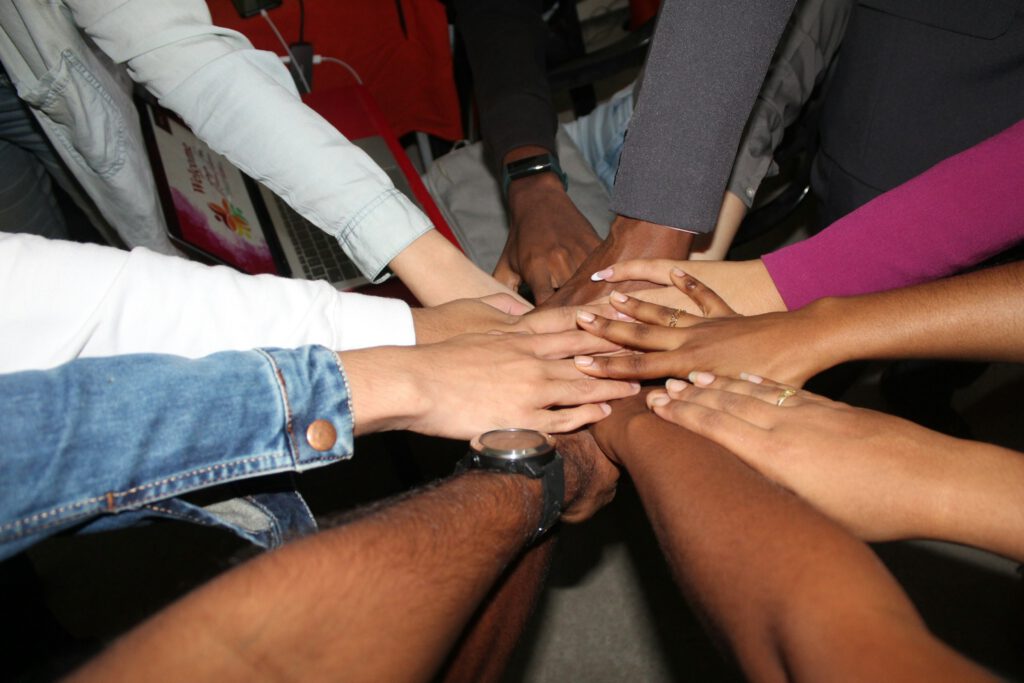
How can we see that the project (or initiative, strategy, service, scientific model, movement, etc.)
… is designed for being EXECUTABLE, SCALABLE and DURABLE
—at the SYSTEM LEVEL?
2.

That’s questions like those of point 1. Our Call-to-Action Video Series is built to help you do just that. Sign up to get the latest releases:

Under development
Add info@lon-manifesto.org to your contacts to avoid missing it
3.

That’s when important decisions are to be made
4.

Related Hard-to-Ignore Questions are available near the end of the section
5.

You prefer to contribute ignition interventions only?
This is it
You want to know more?

The Law of Nature ManifestoTM
For Solving Complex Problems
Manifesto Approach

What matters is that the gaps and conflicts identified above are resolved to the level where:
It doesn’t matter whether this is achieved with or without Manifesto elements.
To drastically speed up transformations, we invite professionals to ask this question when decisions¹ involving complex matters are to be made:
Are the planned activities designed FROM THE START to be executable, scalable, and durable — so that the value² expectation is achievable at the system level? 3
This question is answered TOGETHER with knowledgeable representatives of the groups involved and impacted — and the participants familiar with the information from the top of this page to this section
¹ Can be a decisions related to an initiative, movement, project, strategy, solution, regulation, service, scientific output, etc.
2 Value includes value not measurable in exact ways like improved productivity, and happy clients (see Manifesto Extension 7c)
3 Because
The representatives have confirmed that the value expectation is achievable without Manifesto elements?
When the desired future situation is identified and activities are aligned to achieve it, the initiative or project can begin in a small environment
This is it
The ‘Value Achievable’ status has not been reached?
Manifesto and Manifesto Tutorials
Levels
The Manifesto, its two extensions, and the Guidance Package are free to use under a Creative Commons license, including commercial purposes
The Manifesto

INTERVENTION POSSIBILITIES of the HIGHEST IMPACT at the LOWEST COSTS and RISKS
1.
Let go of the thinking that created the growing problems. Keep what works well: what works well and fresh approaches complement each other for far-reaching effects.
Patterns of what communicates “too much of the same thinking that created the growing problems”
These 8 Manifesto intervention possibilities and 7 more in two extensions
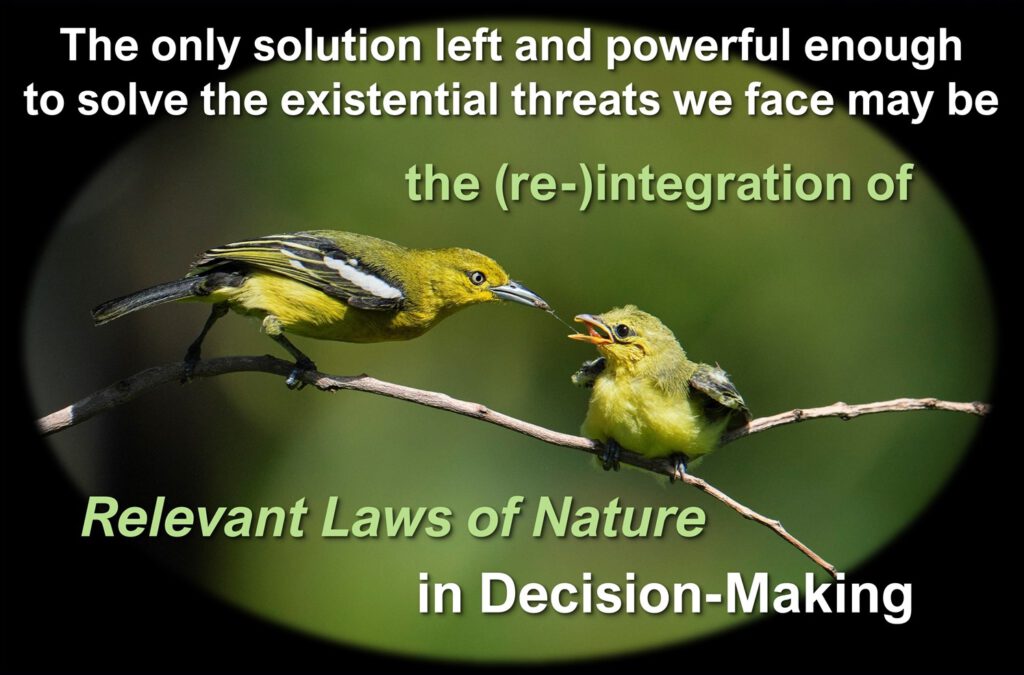
2.
Listen to what delivered the needed results where our long-standing solution approaches failed us
3.
Intervene where the highest impact can be made at the lowest costs and risks™ AT THE SYSTEM LEVEL
After 2+ decades of failed solution attempts, large groups have learned to intuitively recognize when a new solution attempt or movement applies too much of the same thinking that created the growing problems. They respond with a lack of interest and support or opposition.

Common patterns of ‘the same thinking that created the problems’ include:

Hard Laws of Nature, typically available from physics, mathematics, chemistry, and biology cannot be overruled or ignored. Nature does not allow it. Yet, it happens day in and day out, resulting in huge damage, such as crippling bureaucracy, available solutions getting stuck in the system, resistance, and violent opposition. Several of the same laws provide practices to intervene where the highest impact can be made at the lowest costs and risks AT THE SYSTEM LEVELS. That’s without worrying about mathematics and across industries, fields, and challenges.
A simple introduction of the two Laws of Nature almost certain to occur in complex environments is available through the Manifesto Tutorials 1 & 2 of the Guidance Package of Intervention 4.
One word, derived from two Laws of Nature, is bound to provide the highest-impact solution at the lowest cost and risk for the crippling bureaucracy and overwhelming complexity. It prevents decision-makers and experts from unconsciously fueling bureaucracy and enables them to select practices that reduce bureaucracy, resistance, and opposition.
How this word can be applied is available via the Guidance Package of Intervention 4, Tutorial 3.3: One Word to Make …
4.
Resolve the knowledge-experience-solution gap of how complex problems can be solved by TREATING IT AS A SINGLE GAP

With the growing problems being complex and the long-standing solution attempts having failed us for 2+ decades, it has become evident that the gap of how to solve complex problems must be resolved with a fresh approach.
When the Manifesto’s co-creators could not find any group, institute, or organisation addressing or taking on this matter at the required levels in the field, they took it on. Highest-impact knowledge from science and experiences with what delivered needed results where our long-standing approaches failed us, led to an extension of this closing-the-gap intervention and a Guidance Package of surprisingly short video tutorials.
5.
Get solution possibilities EARLY ON over the Tipping Point where they become executable, scalable, and durable at the SYSTEM LEVEL
The Guidance Package of Intervention 4 includes a fresh approach to get over this Tipping Point EARLY ON. This approach is available through Tutorial 3.4.2. When, despite the efforts, it remains unclear how this Tipping Point can be crossed, foreseeable failure can be prevented by:
It is clear how the system level can be achieved and this is part of the identified approach. Differences with the long-lasting but failed approach of ‘start small, scale up (and get stuck)’ are:
Scalability and system-level needs can be dropped when the problem to solve is within a small environment and the following criteria are met:
The early-on need can be dropped when the criteria for a small environment are met, and the analysts and solution designers are highly experienced in the cross-disciplinary knowledge and solution possibibilites of this Manifesto.
1 Value includes non-financial value such reducing (virtual) capacity bottlenecks like those of skill shortages, productivity improvement from motivated employees, and clients trusting vendors and institutions
6.
Ignite the PROBLEM-SOLVING thinking by asking THE SAME HARD-TO-IGNORE QUESTIONS which guide DECISION-MAKERS and EXPERTS to the HIGHEST-IMPACT SOLUTIONS
Examples
When decisions are to be made, the following questions can be asked:
The Manifesto’s collection of HARD-TO-IGNORE questions guiding to HIGHEST-IMPACT SOLUTIONS
7.
Verify decisions against relevant Laws of Nature, Core Human Values, Essential Behaviours and Value Cases
Decisions with far-reaching consequences are made day in and day out. Decision-making is the ‘place’ where the difference between fueling or solving the growing problems we face is made.
Manifesto Tutorials 1, 2, and 3.2 of the above-mentioned Guidance Package identify:
Tutorial 3.3 identifies how a single word, derived from two Laws of Nature, opens the door to get out of this trap and how this drastically reduces bureaucracy and complexity.

What created the gap: Observed patterns
Until the late 1990s, decision-making was based on a combination of numerical and pattern-based information1. Thereafter, it was believed that decisions should be predominantly based on hard information such as numbers, dollars, and euros, along with step-by-step proof. However, this approach only works up to the Tipping Point of complexity, and this critical limitation was overlooked. Beyond this Tipping Point, even mathematics cannot provide reliable outcomes.
Missing this limitation led to pattern-based information being overlooked and overruled by numerical and bureaucratic requirements, resulting in the LOSS OF A STRUCTURAL FOUNDATION FOR SOLVING COMPLEX PROBLEMS –More on this and the following is available throughout the Guidance Package and in particular Tutorials 1, 2, 3.2 and 3.3.
1 Creating patterns is how our brains makes sense out of complex information.
Consequences of this gap: Observed patterns
Initially
Large groups learned to recognise when
The new approaches of agility and self-organisation failed for higher levels of complexity as executable guidance was missing (exceptions granted)
The situation escalated
Large groups withdrew their support from the establishment and backed other movements, even if it meant creating an additional dimension of problems, and moving us further away from solving the exponentially growing problems.
Solution needs
Over the past two decades, we have seen many attempts to solve this decision-making gap, such as demanding ethics, value-based decisions, regulations, and the like. Even if they are brought in line with the relevant Laws of Nature and further elements of this Manifesto, it remains hard to see how they can be made executable during decision-making processes and provide the value required. This led to these needs:
1. Value Cases need to complement business cases
2. A set of Core Human Values & Essential Behaviours is required:
If needed, they can be complemented with executable elements of ethics, regulations and the like.
Core Human Values, Essential Behaviours and a Value Case approach are available through the extension to this intervention.
8.
Consider one enterprise or system-wide project removing mountains of obstacles
Across industries, fields, and subjects, a common pattern emerged
High-to-highest-impact strategies, solutions, projects and the like are undermined and get stuck by the same obstacles, such as the obstacles of bureaucracy, complexity, and practices of a world gone by. These obstacles are usually outside the sphere of influence of these strategies, solutions and projects, and hiding below the surface. To create powerful strategies, make hidden solutions visible, and unleash their value potential, an enterprise or system-wide project aimed at removing these obstacles may be necessary.
Example: Simplification project –Good intention, but worsening the problem
What do we do when environments become too bureaucratic or complex? We start simplification projects in a few boxes. However, bureaucracy at the system level easily increases more than it is reduced within these boxes. This happens when the damage created from the changes outside the boxes exceeds the value created inside. In our connected world, it worsens when different groups chose different solutions and drift in different directions.
More on this and the simple solution are available in Tutorials 3.2 and 3.3, as well as in section 3.4 of the Guidance Package.
Manifesto Extension to Intervention 4:

Resolve the knowledge, solution, and experience gap of how complex problems can be solved
4.A
Learn practices for analysing complex problems and designing impactful solutions
When we understand where the highest damage is created, we have guidance on where the highest-impact can be made. Further patterns became:
With the growing problems we face, humanity can no longer afford to miss out on fundamental principles of science.
Yet, WHEN PROBLEMS TO BE SOLVED WERE COMPLEX, the Manifesto’s co-creators could not find anyone working with or responding to applying the following principles of science, neither in organisations nor in science itself. Typical responses were “doesn’t fit my discipline,” “what’s a Law of Nature?” or no response at all.
The following principles urgently need to be (re-)integrated into decision-making, research, strategy design, innovation processes, and much more:
Experience: A small number of such laws can have a huge problem-solving impact
Example of where these principles were applied: this Manifesto
The following practices emerged as foundations for re-creating trust. To make it happen, relevant practices may need to be part of a larger package designed to get over the Tipping Point where the package becomes executable, scalable, and durable at the system level (Intervention 5):
For Core Human Values and Essential Behaviours, see Manifesto Extention to Intervention 7
This is to enable people of various groups, fields and subjects to move into a common direction and act as a single entity
The guidance
4.B
From the Manifesto and the Guidance Package, select what is relevant
Knowledgeable representatives of the groups involved and impacted decide TOGETHER what is relevant and will be used. The rest can be ignored.
Other solution elements you or the groups involved and impacted may have, as well as third-party guidance packages can be used, provided they:
4.C
Integrate relevant guidance into decision-making at all levels, problem analysis, solution design, innovation processes and Best Practices
4.D
Create complementary research and innovation processes
Based on:
Funded by:
For more information, see Manifesto’s Tutorial 3.4.4
Manifesto Extension to Intervention 7:

Core Human Values, Essential Behaviours, Value Cases & Hard-to-Ignore Questions
7.A Core Human Values
Health
This is the health of the people, organisation, environment and the planet1
As health requires biodiversity, it includes a healthy biodiversity
Safety
Includes climate and peace1
Basic Needs
Clean water and air, shelter, food, and energy1
Truth Seeking
What may be seen as the truth today can change over time. Establishing truth can be challenging. That’s why this value is truth seeking.
Freedom by being in harmony with each other
Everyone should be able to live freely. However, the freedom of one person ends where the freedom, health, or safety of another person begins.
1 Based on “Sustainocracy: The new democracy.” Jean-Paul Close. https://sustainocracy.blog/what-is-sustainocracy/
7.B Essential Behaviours
Acting With Adaptive IntegrityTM
We give our word (a promise, commitment, etc.) when we have sufficient confidence that we can keep our word. As soon as we know that we cannot keep our word, we inform all parties counting on us and clean up any mess that we caused in their lives. 1, 2
People, objects (organisations, products, services, etc.), and systems are IN or OUT of INTEGRITY.3
1 Integrity: Without it Nothing Works. Jensen, Michael C. Harvard Business School. Jesse Isidor Straus Professor of Business Administration, Emeritus. April 6, 2014. https://ssrn.com/abstract=1511274
2 First sentence adjusted to meet an executability need
3 Seminar. Jensen, Michael C. Erasmus University, Rotterdam. 2011.
Being Authentic
Originality, worthiness, seeking the truth, kindness and compassion to see beyond ourselves and without neglect
Seeking the Truth
Listening Authentically
Of course, this cannot mean listen to everybody and everything. Such approaches would quickly be in conflict with the Tipping Point and Capacity Bottleneck Laws of Nature. As such conflicts occur, a switch to other practices is required, like those most relevant to everybody, which brings us to the Core Human Values and Essential Behaviours provided here. A further practice is that of co-creation on equal terms, and with knowledgeable representatives of the groups involved and impacted.
Learning From Failure
In complex environments failure is guaranteed to happen as every situation can or will be different and the ‘unexpected unexpected’ keeps popping up. The following pattern surfaced: Learning from failure and an attitude of preventing the same failure from re-occuring reduces failure rates structurally.
Take Ownership
Taking ownership is about taking the initiative and communicating regularly with stakeholders to ensure that expectations are shared transparently
Personal responsibility and accountability
Within boundaries, individuals and teams are given the freedom and means to solve complex problems:
Like Business Cases identify high-to-highest impact information in the form of numbers, Value Cases do the same with patterns.
Examples of patterns:
Patterns are reliable practices because creating patterns is how our brains make sense of complex information. A benefit is that we do not have to go through endless discussions, for example, on agreeing on definitions. Everybody can have a somewhat different view. As long as we understand each other, decisions can be made.
With the numbers AND patterns at hand, hard-to-ignore Guiding Questions such as those in the following dropdown box, and in the collection of Manifesto Intervention 6 are responded to.
When decisions are to be made
Does the decision improve or worsen the health of the people, organisation, environment, or planet?
When stress, burnout rates, or cost saving-pressures are high
When productive employees are laid off
When decisions are made
Where is the project to reduce the unnecessary bureaucracy and complexity to healthy levels by applying the Tipping Point and Capacity Bottleneck Laws of Nature (more in Tutorials 1, 2 to 3.3)?
On Adaptive Integrity
Is the person, group, organisation or system IN, or OUT of INTEGRITY?
Is the object (i.e. a product), solution, or service IN, or OUT of INTEGRITY?
On Attitude
Is the person’s attitude in line with relevant Core Human Values, Essential Behaviours, Value Cases approach, and Laws of Nature?
Is it based on
On Learning from Failure
Is the organisation’s culture one of learning from failure, or is it one hit by the same failures being repeated?
What delivered needed results where our long-standing approaches failed us
Tutorials
5 to 25 Minute Tutorials For
Those who want to know where and how to intervene
2 hours only
Those designing and executing transformation projects
2:30 hours only
A group of independent individuals with extensive experience in what provided needed results where our long-standing solution approaches failed us
Core Team
Netherlands, Germany
Polymath | Initiator of the Manifesto
Senior Analyst, Consultant, Inventor
Arti Ahluwalia
India
Polymath
Coordinator of Publications UN Commons Cluster NGO Major Group
Ecocivilisation Country Chair India
Director at Dimex India
James N. Rose
United States
Biologist (retired)
General Systems Analyst
Developer of Integrity Paradigm
Elly Rijnierse
Netherlands
Senior Advisor
Civic Leadership and democratisation in Integrated Area Development
Contributing Co-creators
Emile (Glans) Van Essen
Netherlands
Founding Chair WORLD SUSTAINABILITY FUND
Polymath
Many sustainability projects across the globe have received (large) funds. Emile became a co-creator when he discovered that the Law of Nature Manifesto was addressing many of the obstacles undermining the projects funded and he didn’t see anyone else doing this.
Prof. Manuel Casanova
United States
SmartState Endowed Chair in Childhood Translational Neurotherapeutics & Gottfried and Gisela Kolb Endowed Chair in Psychiatry (retired)
Margie Charpentier
Netherlands
Background support and out-of-the-box contributions
Prof. Michael Fitzgerald
Ireland
Einstein-Newton-Darwin Researcher
Child and Adolescent Psychiatry (retired)
Zinzi Nandi König
United States
Interdisciplinary Scientist Biology, Emergency Nurse
Former professor
Dr. Mahendra Shah
Indonesia
Director
Co-author UN-IIASA climate change report 2002
Former IIASA scientist
Adina Tarry
United Kingdom
Polymath
Organisation & Leadership Development, HRM Strategy, Quality & Process management, Business & Consumer Psychologist, Mentor, Master Coach & Supervisor, Lecturer, Author, Speaker
Sponsors

Cooperatieve Vereniging AiREAS U.A.
A value-driven co-operative organization: Together for clean air and health in local environments

Website maintained by ComDyS
Experience and knowledge contributions
Copyright © 2025 by the Law of Nature Manifesto initiative. All rights reserved. Provided the spirit of The Manifesto is maintained, the main Mainfesto parts are free to use and can be shared via Creative Commons (CC) license, even commercially. Please click here for the CC licenses relevant for the parts you like to share or use.
A special thanks all those who contributed one way or the other over a period of three decades. For foto and illustration credits click here.